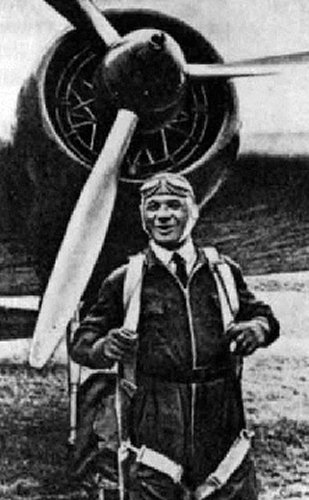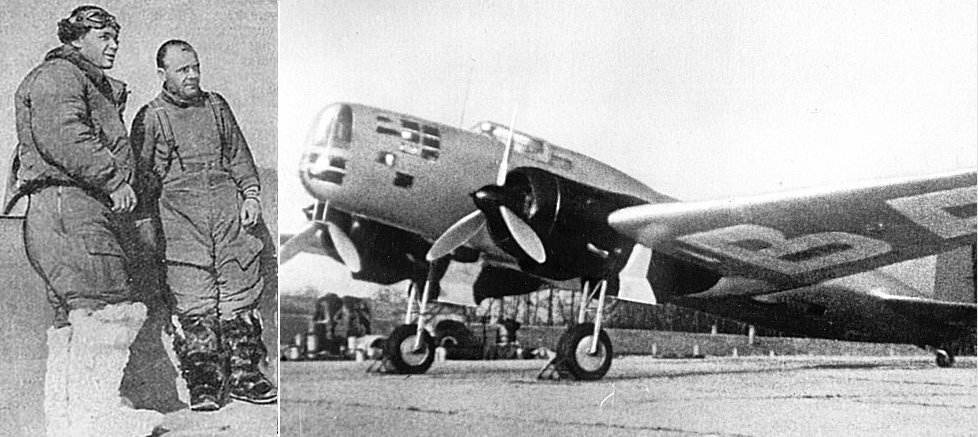MessageToEagle.com – On April 28, 1939, Soviet pilots Vladimir Kokkinaki and Mikhail Gordienko took off on a mission to fly between Moscow and America in the shortest possible time.
The plane developed for the flight was the red bomber, twin-engined monoplane, the TSKB-30, named Moskva (Russian pronunciation of Moscow).

Taking into consideration the unavoidable and disturbing winds, it was decided to take onboard fuel to last 8000 kilometers (5000 miles).
The plane would not hold more than that amount. Even then, it was necessary to save on other things to reduce the weight of the plane.
The Fliers’ boots were made out of special light weight leather, and liquid oxygen was taken on board instead of gas oxygen that required more heavy steel cylinders.
Emergency rations were cut to a minimum, and no other cargo was allowed on the plane.
At an altitude of 5500 meters, the plane flew across Helsinki, and followed the Arctic Circle over Iceland. On the way to Greenland, they were met with a powerful cyclone.
To escape it, Kokkinaki raised the plane to seven kilometers, and during the course of many hours, he and Gordienko used their oxygen masks, with its reserve rapidly declining.
Through cloud covered skies, they flew over the ocean, and the ever- changing winds slowed down, and then suddenly drove the plane to speeds of up to 500 kilometers an hour.
In the final leg of their journey, the plane had to be raised to an altitude of nine kilometers. The oxygen reservoir was running out, weakness and the lack of sleep took its toll, and both pilots were getting dizzy.

Left: The first minutes on the U.S. territory. Kokkinaki and Gordienko on the wing of their plane. Right: The aircraft CKB-30 “Moscow”
The temperature outside and inside the cockpit was 45 below zero centigrade. Straining every nerve, Kokkinaki flew the plane relying solely on the dashboard indicators, having kept hold of the hand wheel for almost the entire day by this time.
Bad weather conditions did not permit a landing in New York. Kokkinaki changed course, and landed on the Moscou Island off the coast of New Brunswick, Canada.
In less than a day (22 hours and 56 minutes) they had covered 8000 kilometers, with an average speed of 348 km an hour. Previously, in 1937, this trip took another Soviet pilot three days.
This was an outstanding achievement for those years of aviation. Since 1959, the route they took is used for the regular flights between New York and Moscow, and in 1965, Kokkinaki was awarded by the International Air Transport Association for finding the shortest flight route between Europe and America.






